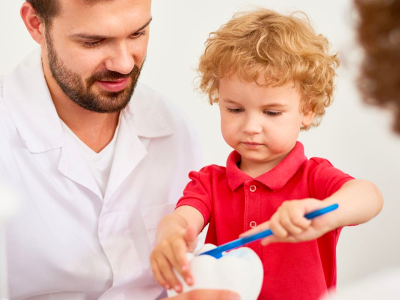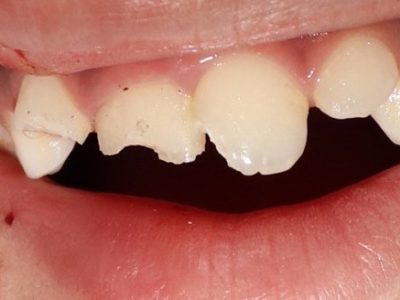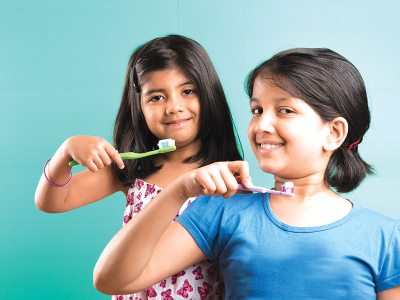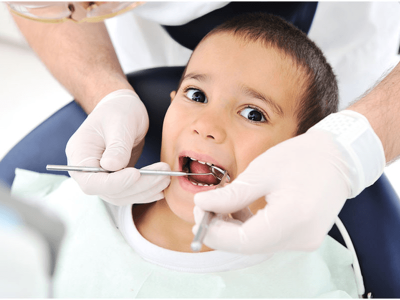Introduction
Pediatric dentistry is considered to be the most needed, yet neglected area in services performed by dental surgeons. Dentists themselves are sometimes unaware of viable treatment options for their little patients which adds to the existing problem of lack of awareness in parents. This article is an attempt to simplify treatment options in pediatric patients for general dentists.
Why is treatment of primary teeth neglected?
- There is a misconception held by many parents that primary teeth are not as important as permanent ones, since they are bound to fall out soon.
- Many general dentists are of the opinion that since primary teeth will exfoliate soon, it is unnecesary to spend time and effort in saving them.
- Dental anxiety and fear of dental treatment in children are considered to be the main reason for management problems and avoidance of dental care by both parents and dentists.
- Monetary issues- as parents are of opinion that its not worth spending over milk teeth.
- Lack of awareness in parents, general practitioners, medical professionals and school teachers (as they spend most of time with kids, they too play a vital role in child’s over all health).
Why are primary teeth important? Do we need to save them? A case study
Children with malformed or severely decayed primary teeth are more likely to experience dietary deficiencies, malnourishment, and be underweight. Proper chewing motions are acquired over time and with extensive practice. Healthy primary teeth promote good chewing habits and facilitate nutritious eating.

Case study: As soon as anyone sees the above image, one may be of opinion that nothing has to be done as they’ll eventually fall off and new teeth will erupt anytime soon.
What we as dentists fail to understand is that treatment protocols in pediatric patients depends heavily on the timeline of eruption and shedding.
Many of us are of opinion that primary teeth fall off at 6 years of age, which is incorrect and an absolute misconception. A simple IOPA of the region will reveal the actual status of the milk teeth and eruption status of permanent teeth.

The above picture shows that the teeth will take more than 2 years to fall off!
So what to do till these 2 years? Wait and watch? Is there anything that we can do? But why should we do something at this stage? What are the consequences of not treating this child?
This child is 5 years 8 months old, and this is a case of severe-ECC (DMFS score more than 6 surfaces constitutes S-ECC). Here are the problems this child is encountering:
- Difficulty in chewing, which means less food intake, less nutritive eating and possibly low weight of the child.
- In Figure 1, you can notice child is developing tongue thrusting habit due to absence of coronal portion of anterior teeth.
- Missing anterior teeth can lead to lisping of speech, difficulty in pronouncing labio-dental sounds (f, ph, v) and linguo-palatal sounds (c, ch, t, th, r) consequently, leading to speech problems.
- Child is also developing a pseudo class III malocclusion because of missing anterior teeth.
- The unesthetic appearance of these teeth affects the child psychologically and he/she becomes more conscious while smiling and talking.
- Lastly, there is always a risk of developing infections easily in such damaged teeth.
Hence considering all these factors it is extremely important as dentists to understand the treatment needs of a child at this age, as well as educate the parents and execute appropriate treatment plan.

So how to save primary anterior teeth?
There are multiple treatment plans that can be done in the above case and they are-
- Pulpectomy of all anterior teeth followed by a core build up using composites and restore with strip crowns or zirconia crowns.
- Extract all incisors, give a fixed functional space maintainer (Gropers appliance) and pulpectomy of canines with coronal restoration. Canines need to be preserved since they are corner teeth and are important in inter-canine width growth.
- Extract incisors and give removable functional space maintainer.






How to decide appropriate treatment?
Treatment can be decided based on
- root length of incisors,
- age of child,
- amount of crown structure remaining,
- restorablility of teeth,
- patient co-operation and
- financial factors.
All of these options help in improving, function and esthetics of the child.
What about the posterior teeth?
Children have only 2 molars in primary dentition and these are the main teeth for chewing food until first permanent molar erupts. But during the eruption of first permanent molars, until they are completely in occlusion, primary molars are still the important teeth for mastication.
What are consequences of a decayed primary molar? Why do we need to restore them?
- Primary molars are important teeth for mastication till first permanent molar erupts in complete occlusion.
- Primary molars are important in maintaining space for erupting premolars.
- Primary molars are responsible in increase in jaw length and width.
- Proximal caries in primary teeth leads to reduction in arch length and thus leads to space loss for erupting premolars.
- A pulpally involved carious molar is more prone to space infections.
At what age do primary molars exfoliate and till what age do we need to retain them?
This is most common misconception amongst dentists that primary molars exfoliate at 8-9 years. Again a simple IOPA will give a clear idea as how long will premolars take to erupt.

This IOPA of a 8 year old child shows that erupting premolars are in Nolla’s stage 4. Eruption of premolars begin after Nolla stage 7 or 8 (when half of root formation has completed) so these teeth have still a long way to go… hence they need to be preserved.
Primary molars can be restored by performing:
- pulp therapy (pulp cappings, pulpotomy, pulpectomy), and
- full coverage crowns.
Full coverage crowns can be stainless steel crowns or zirconia crowns. These crowns are very good in maintaining arch length and also reinforce mastication.

What if we have to extract the primary molars?
Generally, premolars erupt around 10-11 years of age. In case where the primary molars are not restorable, it is very important to maintain the space until eruption of premolars.
An early loss of primary molars can lead to space loss, leading to impaction or crowding of premolars.
In such cases proper treatment planning has to be done. This is the most ignored aspect in dentistry with children. Often children get teeth extracted and nothing has been done later. Appropriate space maintainer has to be planned. Parents and general dentists need to be aware of space maintainers and their importance.
- In case of unilateral missing primary teeth, band and loop space maintainers can be fabricated. These are easy to fabricate, cost effective and easy to remove when tooth starts erupting.
- In case of bilateral missing teeth, lingual arch space maintainers can be fabricated for mandibular arch and Nance palatal arch can be fabricated for maxillary arch.



Conclusion
Shortcoming of most of the dental surgeons when treating children is their lack of knowledge, clinical skill and lack of awareness of importance of primary teeth. Most of the dental surgeons feel uncomfortable and avoid treating children. Many more dental professionals will need to be aware of and skilled in the communication management methods so that they can perform dental treatment and also impart preventive strategies in children.
Every child deserves a healthy beautiful smile and we dentists are responsible for the same!
Author – Dr Nihal Kothari



















Comments